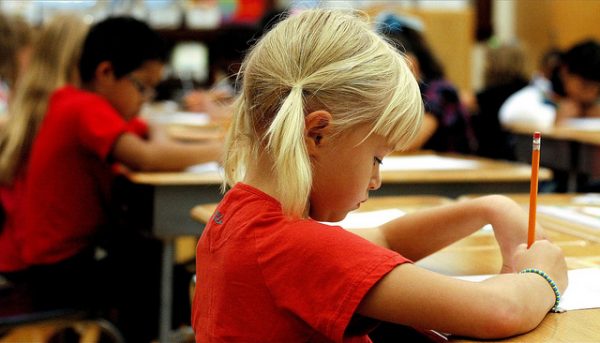
Many of us can recall at least a few teachers who influenced our career interests. At the same time, contentious relationships with educators may discourage class participation and extracurricular involvement. Social scientists of education provide important insight into how teachers and school administrators’ perceptions and disciplinary actions often stem from race, class, and gender stereotypes. They find that these early educational challenges may widen social inequalities later in life.
Several studies suggest that white teachers often view black students less favorably than their white students. These negative perceptions result in lower grades and student evaluation scores for minority youth. Non-white teachers, however, are less likely to hold more negative views towards minority students. But not all minority students are viewed less favorably. One study indicated that teachers’ perceptions regarding Hispanic students were similar to those of white students, while many teachers reported more favorable views of Asian students than white students.
- Douglas B. Downey and Shana Pribesh. 2004. “When Race Matters: Teachers’ Evaluations of Students’ Classroom Behavior.” Sociology of Education 77(4): 267-282.
- Karl L. Alexander, Doris R. Entwisle, and Maxine S. Thompson. 1987. “School Performance, Status Relations, and the Structure of Sentiment: Bringing the Teacher Back In.” American Sociological Review 52: 665-82.
- Patrick B. McGrady and John R. Reynolds. 2013. “Racial Mismatch in the Classroom: Beyond Black-white Differences.” Sociology of Education 86(1): 3-17.
Teachers’ perceptions also rely on cultural beliefs of female intellectual inferiority, especially in mathematical subjects. Minority boys and girls are overrepresented in lower level math courses and are more likely to obtain lower test scores than their white peers, which partially explains teacher differences in student perceptions. Yet, even when considering GPA and test scores, “high school math teachers are less likely to judge white females as being in a class that is too easy for them” (312). White boys are then perceived as the group to which all others – white girls, minority boys, and minority girls – are compared.
- Catherine Riegle-Crumb and Melissa Humphries. 2012. “Exploring Bias in Math Teachers’ Perceptions of Students’ Ability by Gender and Race/Ethnicity.” Gender & Society 26(2): 290-322.
Negative views of students also affect school disciplinary actions. Though many schools espouse the idea of helping ‘at-risk’ youth, organizational policies and practices may actually push students out of school. Observations from one high school suggest that teachers construct images of “troublemakers” based not only upon the student’s behavior, but also their prior academic performance (e.g. grades, truancy record, status on the honor roll). Thus, administrators and teachers were less likely to view students who maintained higher academic performance but misbehaved as “troublemakers.” These images, however, vary across gender and race. Teachers and school administrators often punish Black girls more than white girls through referrals, suspension, and expulsion for exhibiting what they deem as loud, disruptive, and aggressive behavior. In other words, behavior that fails to conform to traditional norms of femininity.
- Christine Bowditch. 1993. “Getting Rid of Troublemakers: High School Disciplinary Procedures and the Production of Dropouts.” Social Problems 40(4): 493—509.
- Monique W. Morris. 2015. Pushout: The Criminalization of Black Girls in Schools. New York: The New Press.
- Edward W. Morris and Brea L. Perry. 2017. “Girls Behaving Badly? Race, Gender, and Subjective Evaluation in the Discipline of African American Girls.” Sociology of Education 90(2): 127-148.

Comments